If my memory serves me well the first stage gain is equal to:
$$A_{V1} = gm*r_\pi = \frac{r_\pi Q6}{re2}$$
$$re2 = \frac{26mV}{I_{C2}}=\frac{26mV}{290\mu A} = 90 \Omega$$
$$r_\pi Q6 = (\beta+1)*re6 = 150 * 4.8\Omega = 720\Omega$$
Hence first stage gain is:
$$ A_{V1} = 8V/V $$
Q6 stage voltage gain is large but will drop due to \$R_L\$ loading effect.
$$A_{V2} = \frac{R_C}{re} \approx \frac{\beta1*\beta2*R_L}{4.8\Omega}\approx \frac{20k\Omega}{4.8\Omega} \approx 4167 V/V$$
Without the load, the Q5 output resistance will be larger than
\$ro\$ is larger then this value \$ ro \approx \frac{V_A+V_{CE}}{I_C} = \frac{40V + 32V}{5.34mA} = 13.5k\Omega\$
Where \$V_A\$ is the Early voltage ( from measurement VA is 40V)
And this current source \$ro\$ will be in the range of 1Mega ohms due to Q4 negative feedback.
Also, I hope that this is just a simulation project and you are not gonna to build this in real life.
